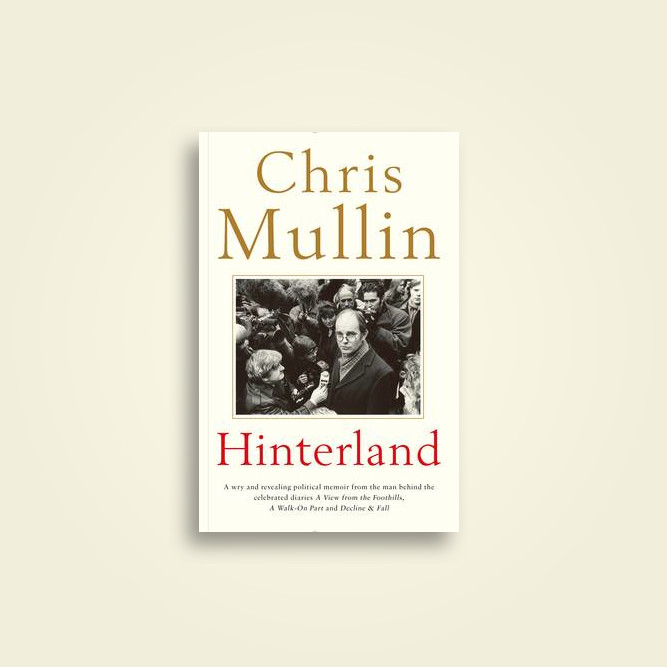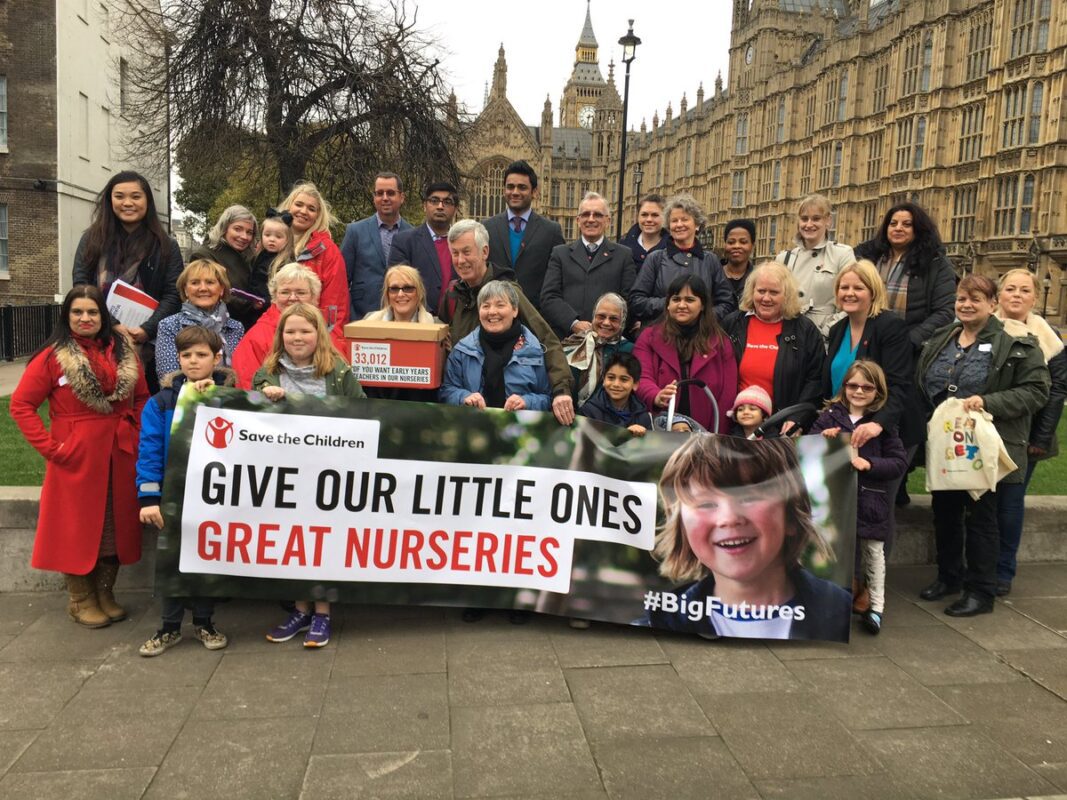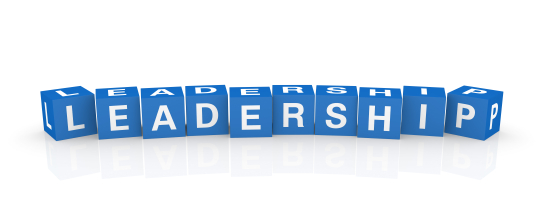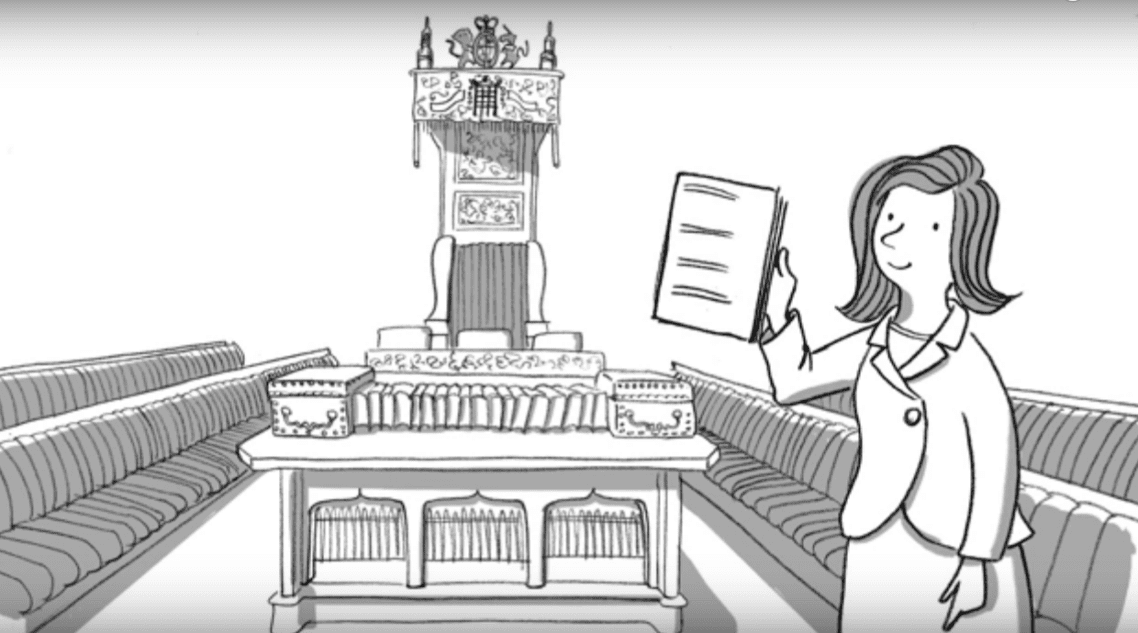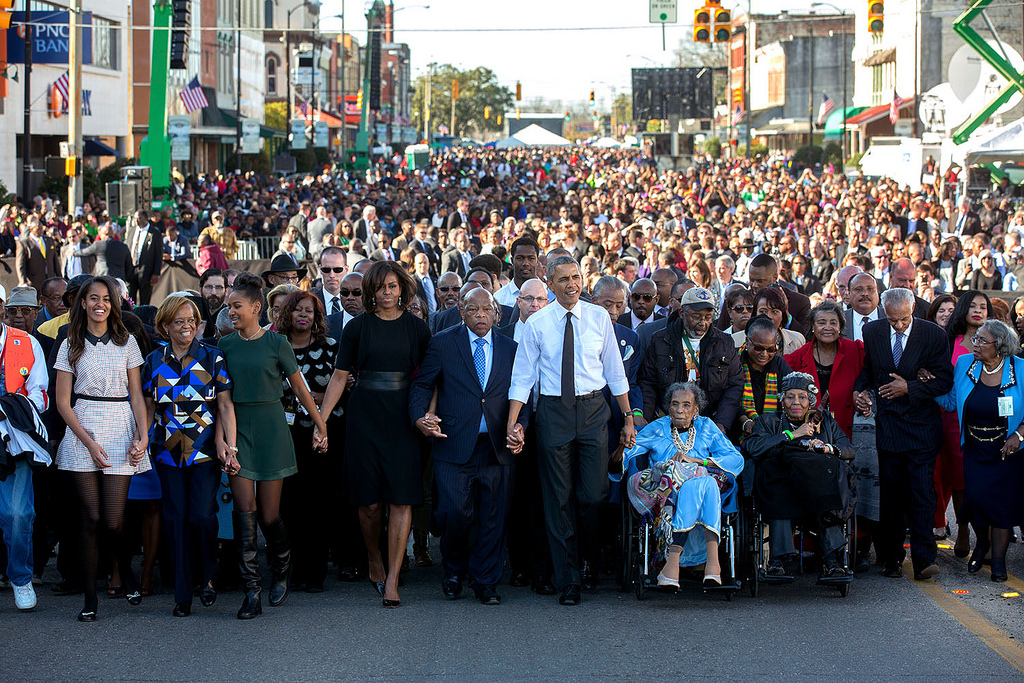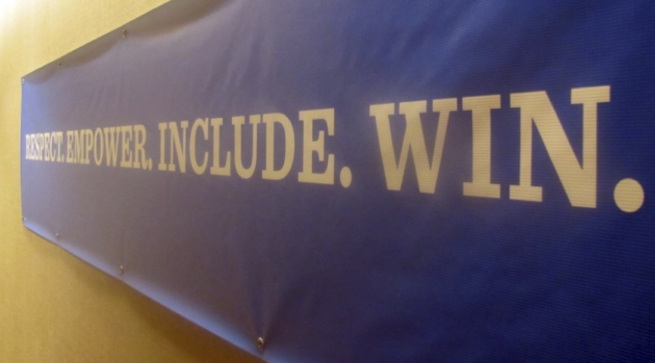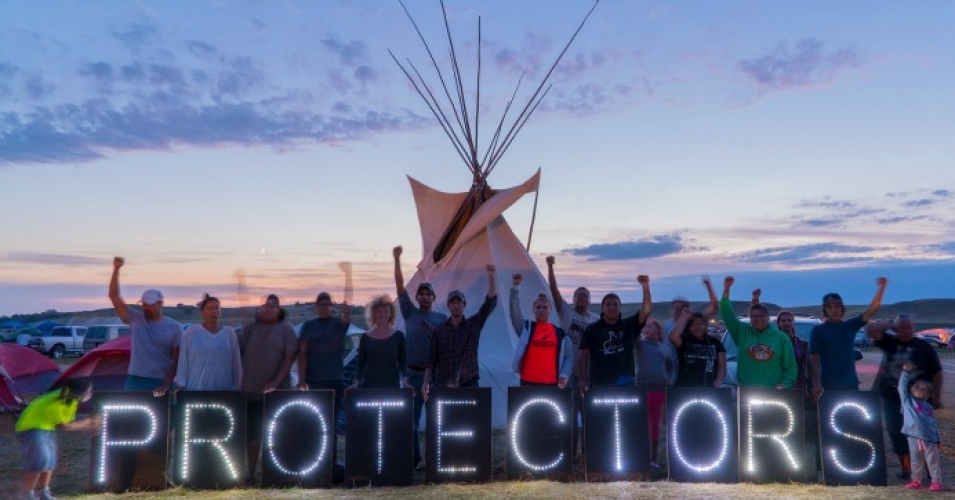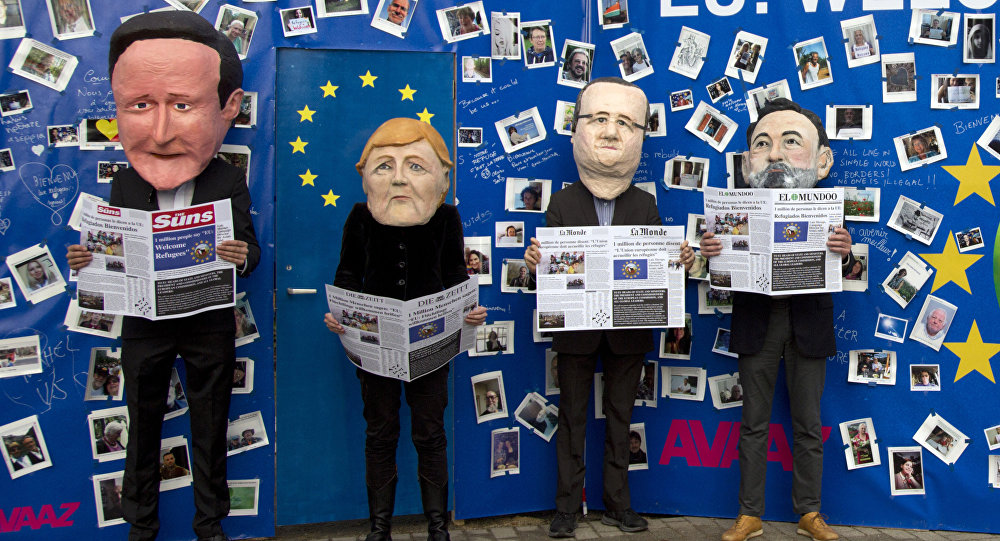With the rise of protests in the wake of Donald Trump’s election in the US, it’s been interesting to see the emergence of articles looking at the findings of academic studies into protest movements and campaigning. Because they’re not tied to a single issue, they’re able to step back and look at the trends and evidence of what works.
Here are a few key lessons from the evidence that might be useful in the campaigns that you’re running – some of them are more obvious that others!
1. The size of your protest matters, but so does who is involved – Erica Chenoweth has found that active and sustained participation by 3.5% of a population is often enough, but Chenoweth writes that her research finds that ‘An increase in the number and diversity of participants may signal the movement’s potential to succeed. This is particularly true if people who are not ordinarily activists begin to participate — and if various classes, ethnicities, ages, genders, geographies and other social categories are represented’.
2. Make your protest appeal to others – Researcher Robb Willer looked at what happened when three different types of protesters—animal rights, Black Lives Matter, and anti-Trump—used either moderate or extreme protest tactics, and found ‘the reason the extreme protesters were dissuasive is that less-radical bystanders couldn’t identify with them’. So if you want to grow your movement, think about how others view your tactics.
3. Be innovative and flexible – Academics write that those campaigns the adopt a “repertoire of contention” (or use a range of different types of strategies to you and me) are more likely to succeed. The work of Kurt Schlock suggests that movements that adopt a range of approaches, including a focus on centralised efforts like demonstrations and dispersed methods – are more likely to be successful. So if you over-rely on a single method, you’re less likely to win in the end.
4. Academics can’t decide on the best form of organisation – Academics agree that internal cohesion and collective vision are needed to success and resilience, but also warn against concentrating leadership into a single figurehead.
5. People will get involved for surprising reasons – I’ve mentioned the work of Zaid Munson before, but his research on the pro-life movement in the US is a reminder that people often get involved in movements without having particularly strong ideological commitments to them. Munson found that up to half of those who got involved in pro-life activism were indifferent to the issue when they first got involved.
6. Prepare for the day after the protest – The work of Madestam et al looking at the impact of the initial Tea Party protests in 2009 found that large protests were most effective at shaping ongoing policy when they could continue to demonstrate the concerns of those who attended the initial protest to decision makers.
7. All movements need to overcome the ‘coordination problem’ – People only want to show up to a protest when they know others will participate. Social media activity dramatically speeds up coordination — and helps actions to snowball much quicker than in the past, but you still need to convince enough others that they should attend!
Author: mrtombaker
What it's really like as a Junior Minister
I’ve been enjoying Hinterland, the memoir of former MP and Minister, Chris Mullin in the last few weeks, so it’s reminded me of this post I wrote in 2009 after reading the first volume of his diaries.
I’ve always highly recommended Mullin’s diaries for anyone understanding how Parliament really works (I’d also recommend Power Trip by Labour spin doctor Damien McBride, all of Alastair Cambells diaries and more recently Sir Craig Oliver’s Unleashing Deamons) .
The diaries are a little dated now as Mullin stood down in 2010 – his valedictory speech is one of the best Parliamentary speeches I’ve watched – but I still think they have lots of useful insight.
I’ve be reading the very enjoyable diaries of Chris Mullin MP over the Easter weekend, entitled ‘A View from the Foothills‘ they’re a great look at life somewhere down the ministerial pecking order.
Mullin was a junior minister at the Department for the Department of the Environment, Transport and the Regions (DETR), DFiD and the Foreign Office. It’d be fair to say that Mullin isn’t a great advocate of the lower rungs of ministerial responsibility, but reading the book provides some useful insights into what the work of junior minister is like. Something of tremendous use given that much of the engagement campaigners and lobbyist often have is with junior ministers.
A few key lessons stand out;
1. Junior ministers aren’t often particularly interested in the brief they have. Mullin, who before becoming a minister was a influential chair of the Home Affairs Select committee, implies he knew next to nothing about the environment when he started in that job, and kept up simply from reading the briefs provided to him.
So we shouldn’t be surprised when they’re not especially interested, Mullin seems to infer at times that the best issues to deal with are the ones that are trouble free, uncontroversial and mean that they won’t cause any embarrassment. Some lobby for the post they really want but most don’t get it.
2. Ministers sign lots of letters. Mullin talks about spending hours at the office often late at night signing letters from MPs. Few get mentioned, although he does despair when thanks to a Friends of the Earth campaign he has to sign over 500 letter. A good way to make a point, but perhaps a quick way to loose good will?
3. They spend lots of time giving speeches – part of the life of a junior minister is to go out and about around the country and give speeches to organisations which have some link. Mullin suggests most aren’t very well written and he was often embarrassed to deliver them. So the next time you hold an event and the minister doesn’t give the barnstorming speech you expect after watching too much West Wing, it probably isn’t their fault.
4. They don’t have huge amounts of access to the Secretary of State or the PM. This obviously depends on the department they’re posted to (so access seems to be better at the Foreign Office under Jack Straw than at DETR under John Prescott) but most seem only to have access to the Secretary of State at weekly departmental meeting and occasional rushed conversations here and there. Generally Mullin doesn’t give the impression that they get to set a departments agenda, this comes from the Secretary of State (or often even higher up government).
5. They are advised to pick a few issues to change policy on – Mullin while at the environment and region chose try to deal with leylandii hedges, rent paid to absent landlords and getting away without a ministerial car. All valuable but hardly groundbreaking, and even then it was hard work navigating between special interests, civil servants and government priorities to make progress.
6. So much of politics is informal – from the diaries you get the impression that many decisions are made through quiet conversations in tea rooms, chats in the lobby, a call to a friend who is a friend with another minister or a written note slipped into a box.
7. MPs spend lots of time on the train! Mullin is often talking about catching the 20.00 back to Sunderland and bumping into this or that MP. I think my next campaign strategy is going to map the MPs my target might catch the train home with!
How to – Organise a supporter Lobby of Parliament
Some of my excellent team at Save the Children have spent the last 3 months organising a lobby of Parliament in support of our Big Futures early years campaign calling for more invest in nursery teachers.
Yesterday, we had an amazing day with over 60+ supporters coming along, meeting with there MPs and talking about the campaign ahead of the budget. It was a brilliant day.
As with so much of campaigner there isn’t really a written down guide to ‘how you go about organising a supporter lobby of Parliament’ so in an effort to readdress that, and also because my ‘How to organise a Downing Street petition handover’ has proven to be popular, here are a few lessons;
1. Set the date well in advance – lobbies of Parliament take lots of work to organise so if at all possible give yourselves at least 3 months to plan it. As you set the date do a quick to check to see if anyone has planned to do a lobby on the same day. Sometimes that can’t be avoided but if other big events are taking place it means it’s likely to be busy.
2. Get in touch with Serjeant of Arms Office – they’re responsible for what happens in and around the House of Commons, so it’s good for them to know what you’ve got planned, but be careful of the language that you use when describing your event with them! I’d avoid describing it as a ‘mass lobby’ as that conjures up specific images of 1000s of people (if you’re going to have 1000s of supporters coming along I’d strongly recommend you get help.
3. Wednesday is a great day to do a lobby of Parliament – if you’ve got some flexibility in when you can hold your lobby, try to do it on a Wednesday as that the day most MPs are around. Aiming to catch MPs after Prime Ministers Questions is a good opportunity to arrange meetings.
4. Holding a briefing. Do it outside Parliament – There are lots of great spaces in and around Westminster that you can use, including the Mother’s Union, Abbey Centre and Westminster Central Hall. Using a space outside means that supporters who aren’t familiar with Parliament get an opportunity to meet with you and your team, and you can run through any last minute updates with supporters, and provide an base for the day if people have meetings with MPs at different times throughout the day.
5. You can’t follow up with your supporters enough – Just because someone has said they are coming doesn’t mean that they are. We found that big phone banks where staff joined together to call through all the supporters who’d RSVPd was really effective way to do this. Keeping in touch with your supporters also helps them overcome point 6.
6. Arranging meetings with MPs can take persistence – Some MPs run really efficient and effective offices, but we’ve found that most supporters need to follow up with their MPs on a few occasions before they could secure a meeting, often by phoning them as well as sending emails. This includes having the facilities for supporters to phone MPs on the day.
7. It always takes ages to get through security – it’s a truth universally acknowledged that getting in via the main entrance always take time. So make sure you factor in time for that in any programme. Nothing is worse than missing a meeting because you’re in a queue. Also, if you’ve got supporters travelling some distance, remind them that they can’t take anything that wouldn’t get through airport security into Parliament.
8. Leave a ‘Green Card’ – If a supporter comes along without a meeting, and even after phoning on the day, they still can’t get a meeting, then it is possible to go to Central Lobby and ‘Green Card’ their MP. In former times, Parliamentary convention means that any MP who got a ‘Green Card’ would come and meet there constituent, but now it’s more of a ‘I called but you weren’t in’ way of getting a message across!
9. Have lots of staff around to help supporters – we found having staff located in strategic places within the Palace of Westminster was really helpful for looking out for supporters before/after meetings. Just because you’re used to heading into Parliament don’t assume that your supporters will be. It’s a imposing, inspiring, and bewildering building for many.
10. Make sure you provide talking points, and something to leave with MPs – You’ve briefed supporters in person, and on paper. Great. But you wouldn’t send your CEO into a lobby meeting without a set of talking points. So don’t do the same with your supporters. Also have something they can leave with the MP, ideally with local statistics which show the impact of your asks, and clear requests of what you want them to do next. It’s a good way of ensuring that your key asks don’t get forgotten.
11. Capture feedback on the day – You want to be in a position to learn how the meetings have gone. So produce a feedback form supporters can complete, and make it clear how you want supporters to pass it onto you. This is where point 9 comes into its own – but reiterating the role for feedback you know what MPs have committed to do.
12. You can’t say thank you enough afterwards – your supporters have just done something amazing for you and your organisation. So make sure you thank them. We offered everyone who came to our lobby a tour of Parliament at the end of the day and they’ll all be getting a hand written note as well.
Leadership in campaigns – links for Sheila McKechnie Foundation 'Masterclass'
I was invited to speak today at a Sheila McKechnie Foundation ‘Masterclass’ on leadership in campaigns – mobilising internally and externally. It was a fun session sharing alongside Claire Hazelgrove from Friends of the Earth, and a group of 20 or so campaign leaders from across the campaigning community in the UK.
We looked at what it means to lead internally within our organisation and externally in coalitions. I draw on a few themes that I’ve written about before on this blog, but wanted to pull together some of the resources I mentioned during the session, both for those who came along (thanks for joining) and others who might be interested.
Leading Internally
- When it comes to leading others, it’s really helpful to take the time to consider your leadership style. Tools like Strengthfinder, Myers-Briggs, or www.16personalities.com can be helpful for thinking about this, and then having a conversation as a team or with who manage you.
- I’ve found the writing of Margaret Wheatley, who wrote this excellent and very accessible paper (it’s only 6 pages long) on ‘host leadership’ a few years ago excellent and speaks to some of the differences of leading campaigners.
- These are a few more of my thoughts about leading campaign, and the importance of making sense of the story for those your leading, and the need to continue to share your theory of change.
- I’d encourage any campaign leader to create space to be curious. Some of my thinking has been drawn from the work of Duncan Green and idea of dancing with the system, see my post here on his ideas, and a link to his book ‘How Change Happens‘. I’d also really recommend this by Kate Norgrove who has just finished as Head of Campaigns at Water Aid asking how we know if we’ve made a difference.
- This is more about the DARCI tool that Claire shared.
- When it comes to leading ourselves, I’ve spotted a few people sharing www.findingsteadyground.com in the last few weeks, this is timeless advice and plantothrive.net.au is a good set of resources from Australia.
Leading Externally
- I always point people to this long read from Brendon Cox from a few years ago is an authoritative look at what makes a coalition work.
- A few of my thoughts about what makes coalitions work are here, while this is about the costs of working in coalition. Headlines are they require work, build trust, find the coalition builders and know when to end it.
- I really enjoyed the discussion about how we maintain hope in difficult times. If you’ve not watched Selma, Pride, Milk, Cry Freedom or the many other great films on campaigning then do (this list has some other ideas), and I think it’s prompted me writing another post about the leaders behind the leaders of great campaign movements. As Claire reminded us we should never forget these words of Martin Luther King

- On how our tactics need to respond to the times we find ourselves in. I’d recommend a read of Micah White’s ‘End of Protest‘ not an easy read but a really interesting one.
The Parliament Petition Site – a missed opportunity
At the time of writing the petition to Prevent Donald Trump from making a State Visit to the United Kingdom has reached 1,500,000 signatures – and I’m sure by the time you read this it’ll have grown further.( This site is a nice for tracking how quickly they’re growing).
And while it’s great that people are finding out an outlet for their anger at the policies of Donald Trump, every time I see a House of Commons Petition get shared I’m always frustrated that it’s probably not directing people’s views in the best way.
For me, the site feels as much as an attempt to dissuade people from emailing their MP than a real tool for change. That’s a missed opportunity.
From the launch of the petition website in 2010, I’ve been critical about it’s purpose, and while it’s improved under the guidance of the Petition Committee, watching the numbers tick up today on the Donald Trump petition has once again reminded me of some of the limitations of the site.
1 – The can create a debate but do they change policy? While any petition that get’s over 100,000 signatures is considered for a debate in Parliament, not all do end up getting debated (46 have since the 2015 election), and even then the debate almost always takes place in Westminster Hall (which is seen as a secondary debating chamber).
So while they debates can be good opportunities for MPs to put their views on the record, the outcome is unlikely to change government policy, there are a few examples of the opposite but they’re rare when you consider the number of people who’ve signed petitions in the last 12 months.
While those of us who run campaigns on other platforms might not see that as ‘our’ problem, its bad for all of us, because it undermines our claims that taking action can deliver change.
2 – They don’t channel energy productively. The petition on Trumps visit is a great example of try to harness stop energy but because the petition site has no function to develop a supporter journey that energy doesn’t go anywhere else. If you sign a petition the only other email you’ll get it as notification of if it’s been successful or not. It’s hardly a way of turning people into engaged citizens.
3 – I can’t see any evidence that the petition signatures get noticed by MPs – I know that some of the petitions get debated (46 so far, with another 300+ getting a response from Government) so will be picked up by some, but the way that the information is expressed on the site (with the exception of this map) doesn’t do anything to show specific MPs what their constituents think about an issue. It feels like a missed opportunity.
Now the site isn’t going to go away and as I’ve suggested before with MPs growing tired of ’email your MP’ actions it could be an effective way to channel views of constituents.
So what could be done to make it more user friendly? Here are a few suggestions;
1 – Make it easier to connect MPs with constituency level information – while data is available on a constituency level, it’s not easy for any MP to find out how many people are signing in their patch. To address this, it could be a tool that displays the number of signatures on a petition per constituency, or ranks the most popular petitions in a constituency. It’d be a dynamic way to help MPs see what their constituents actually think.
2 – Find ways of getting real Parliamentary champions to back the petitions – although petitions that go to debate get an MP allocated to it (normally a member of the Petition Committee), I’ve not seen any real evidence that those MPs are really passionate about ensuring that the demands of the petitions are actively pushed – for some doing that would go against the position of their party. But many MPs are passionate about issues, so why not connect those MPs with the issues they’ve long worked on event if they’re not on the Petition Committee.
3 – Ensure any petition that gets over 100,000 signatures get raised directly with a Minister – rather than just a Westminster Hall debate, the most issues raised in the most popular petitions could be raised in the relevant Ministerial Question Time. Taking that a step further, when the Prime Minister comes to the Liaison Committee could they be asked about the issues raised in the top petition in that period.
4 – Allow third party sites to submit petitions – at the moment you can only submit your petition, but what about working with Change.org, Care2 or other digital providers to allow for petitions signed on those sites to be submitted. It would incentives organisations. In the US, the White House under Obama worked to develop an API that allowed people to contribute to their petitions site via third party sites.
Five for Friday – President Obama Special Edition
Anyone who follows me on Twitter will know that I’m a big fan of President Obama – so today isn’t going to be a good day.
I’ve spent some of the last fortnight working my way through some of his final speeches, and through it they’ve reminded me of some powerful lessons for campaigners.
So as he steps down from being President, I’ve put together a special Five for Friday with some quotes and speeches;
1 – That change can start anywhere – from the ‘Fired Up, Ready to Go’ story.
President Obama just told the entire “Fired Up, Ready To Go” story “for the young people here” pic.twitter.com/JELbW00V5m
— Colin Jones (@colinjones) November 7, 2016
If one voice can change a room, and if one voice can change a room, then it can change a city, and if it can change a city, it can change a state, and if it change a state, it can change a nation, and if it can change a nation, it can change the world. Your voice can change the world”
2 – Respect, Empower, Include – the organising philosophy of the campaign.
And we trusted our volunteers with a simple set of organizing principles: Respect people. Empower people. Include people. Listen to people. Find out what’s on their minds. Find out what’s moving them. So that this wasn’t a top-down affair, but this was a bottom-up affair. And people could come up with their own ideas about how to get people involved and what to emphasize and how to organize themselves. And together, we created a movement for change that couldn’t be denied
3 – That campaigning can get you to the table but you need to work with politicians to deliver policy change – from his answer to a question about community organising at a Town Hall in London.
One of the things I caution young people about, though, that I don’t think is effective is once you’ve highlighted an issue and brought it to people’s attention and shined a spotlight, and elected officials or people who are in a position to start bringing about change are ready to sit down with you, then you can’t just keep on yelling at them. And you can’t refuse to meet because that might compromise the purity of your position.
The value of social movements and activism is to get you at the table, get you in the room, and then to start trying to figure out how is this problem going to be solved. You, then, have a responsibility to prepare an agenda that is achievable, that can institutionalize the changes you seek, and to engage the other side, and occasionally to take half a loaf that will advance the gains that you seek, understanding that there’s going to be more work to do, but this is what is achievable at this moment.
And too often what I see is wonderful activism that highlights a problem, but then people feel so passionately and are so invested in the purity of their position that they never take that next step and say, okay, well, now I got to sit down and try to actually get something done.
4 – That our movements inspire others to take action – from his speech in Selma to mark the 50th Anniversary of the Selma to Montgomery Marches across the Edmund Pettus Bridge.
Young people behind the Iron Curtain would see Selma and eventually tear down that wall. Young people in Soweto would hear Bobby Kennedy talk about ripples of hope and eventually banish the scourge of apartheid. Young people in Burma went to prison rather than submit to military rule. They saw what John Lewis had done. From the streets of Tunis to the Maidan in Ukraine, this generation of young people can draw strength from this place, where the powerless could change the world’s greatest power and push their leaders to expand the boundaries of freedom.
5 – Change happens when ordinary people get involved – from his final speech in Chicago last week.
If something needs fixing, then lace up your shoes and do some organising…..show up. Dive in. Stay at it.
Why it's time for campaigners to take digital security seriously…
While my password is more sophisticated than ‘password’ – you might laugh but a recent article by suggested that’s a very common password – I know I’ve not spent enough time thinking about protecting myself online.
But with news of the hacking of the Clinton campaign, an awareness of how much information that I produce is held in ‘the cloud’, and reading stories like this about a sophisticated attempt to create a fake campaign group to hack the IT systems of organisations like Amnesty who had been raising concerns about workers rights in Qatar. I’ve started to think that I need to consider taking my digital more security more seriously.
As campaigners, we’re often working on issues where there are powerful vested interests that we’re opposing, so making sure that we’re thinking about our data security should be on our to do list. Attending CampaignCon in October it was interesting just how many campaigners at the conference were talking about it as a key concern for the work they’re doing.
For many campaigners, it’s a challenge to get the balance right. We want to collaborate with others which makes platforms like Dropbox and Google Doc invaluable, we need to use social media channels like Twitter and Facebook to get our messages out, and investing in complex cyber security can feel like an unnecessary cost when every penny counts..
It’s easy to think that you only have to worry about your digital security if you’re running some campaign on the arms trade, or in a country with a repressive government. But that’s before you start to investigate the powers that governments have over our data (see the recent Investigatory Powers Bill/Snoopers Charter passed in the UK last) or consider what new laws President Trump might implement and what that would mean for any data held in the ‘cloud’ on a US server.
2017 is the year that cyber and data security need to be every campaigners concern.
If that’s not enough to convince you – at a time when elements of the media are looking for charity scandals making sure that you’re no unwittingly writing a front page story is another reason to revisit those social media permissions.
I’m no expert at how to do this, but I’ve found the following articles really helpful as an introduction to thinking about digital security – but please do add other thoughts in the comment box below.
Step 1 – Start with some light housekeeping – I found this article from Owen Barder really helpful. It’s nothing complicated, but making sure that you’ve got two-step authentication set up, are using a password manager and thinking about where you store key information are some simple and easy steps to take.
Step 2 – Think about encryption – This is a really helpful guide to thinking about how you can tread more lightly when you’re using the internet. Again, nothing that requires lots of technical expertise, but it’s got some really useful suggestions about how to search in private or use secure message platforms like Signal to share.
Step 3 – Consider a digital detox – If you’re concerned about Google actually knowing more about you that your best friend thanks to your search history, use of Google Maps, etc. Have a look at the Digital Detox that Tactical Tech have launched. Again its’s full of really simple and easy steps you can take to take back control of your digital self
Step 4 – Review your campaigns risk – Clearly every campaign comes with a different level of risk attached to it, but this articles from Mobilisation Lab really helpful. I found thinking about this made me consider what information I’m sharing information with on email or who is on those big mailing lists I’m sharing my latest campaign dilemmas with.
Step 5 – Dive in to find out more – The Tactical Tech Collective is a brilliant place for anyone wanting to learn more about digital security – there Security in a Box project while designed for frontline human rights defenders has lots of practical ideas.
Please do use the comments box to share others thoughts, ideas and resources.
What more can I be doing in 2017? My campaigns resolutions for this year
Today will mark the first day in the office for many after the Christmas break. In previous years, I’ve written posts on the resolutions that you can make to be a better campaigners this year (you can read them here) they’re full of useful advice that I’d stand by, but this year I’ve decided to share the 7 things that I’m going to try to do more of as a campaigner in 2017.
2017 feels like it’s going to be important. 2016 was a difficult year, and on many of the issues I care about their is real jeopardy about the progress we’ve made or could make, so now the Christmas break I’m asking myself what more can I be doing in 2017.
We’ve got work to do, so by sharing this I’m doing so for 2 reason – for accountability, in the hope that by writing this it’ll be harder to avoid doing it (please ask me if you see me) and to prompt other to think about what more they plan to do over the next 12 months.
1) Listen more – If I’m taking anything from 2016, it’s that I need to listen more. I’ve been sharing this quote from Sir Craig Oliver with everyone, because I think it’s at the essence of what we so often get wrong in campaigning.
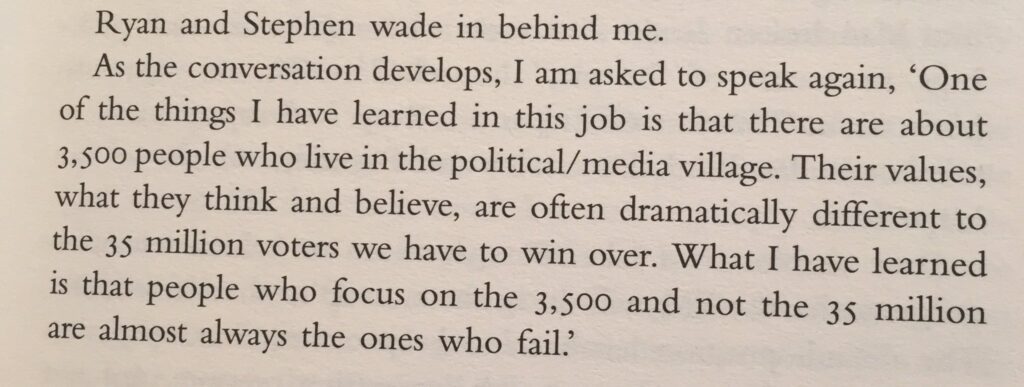
So in 2017, I want to find ways to listen more – to understand what those outside my ‘bubble’ are thinking and to actively seek out different perspectives. There is a temptation to rush from listening to suggesting action or solutions – but I’m not sure that’s going to solve the challenges we face.
So 2017 is a year of listening – I’d welcome practical suggestions of how best to do that. One colleague suggested that we adopt the political party approach of surveying local resident, or perhaps it’s street stalls on High Streets, but whatever solution I come up with I want to be listening more.
2) Share more – I’m convinced that movement generosity is going to be vital if we want to win more. Movement generosity doesn’t mean that we all have to adopt the same approaches or tactics. Far from it, we need to recognise that we’re more effective thanks to campaigns taking insider and outsider approaches, but movement generosity for me is about actively asking how can we collaborate together, and taking time to learn and share from each other.
So in 2017, I want to share more. That’ll be by continuing to write on this blog (and thanks to everyone who has said encouraging things about the blog this year) and make a point of responding to at least one question a week on the E-Campaigning Forum, but I’m also really keen to get out and share with other campaigners – so if you’d like to invite me to speak to your team, department or conference please get in touch. In return, I want to learn from others who are leading and winning campaigns.
3) Read more – I’ve written before that ‘leaders are reader’, so inspired by this article I’m setting myself a goal of reading a few pages everyday, I want to dive into learning more about the Civil Rights Movement something that has long fascinated me, but also learn more about unsung movement builders from history and . I know that reading isn’t for everyone, some people prefer audio books and podcasts (if that’s you here is a list of some podcasts you might want to subscribe to), but however you take in information, I think the principle of actively seeking out new information is a critical one.
4) Get out more – One of the books that I read over Christmas was Gillian Tett’s ‘The Silo Effect‘. I really enjoyed it (and I plan to write more about the lessons we can take from anthropology that she suggests). The book is full that we need to be proactive at getting out of our silos that often emerge in our organisations – perhaps that’s self evident but how often do we fail to do it, accepting that they just exist! This quote at the end of the book is a good challenge;
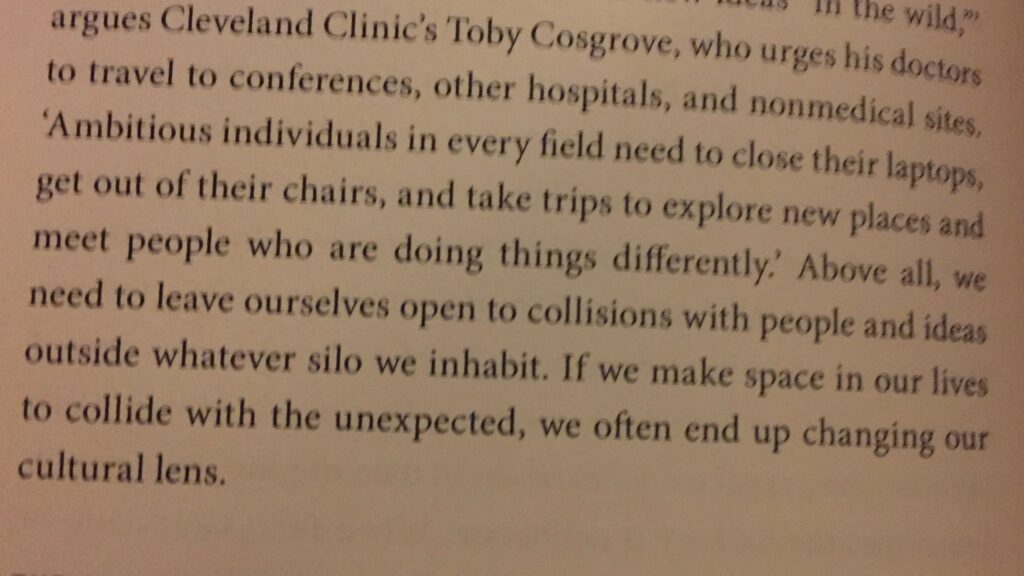
5) Build more – I’m super proud of what Campaign Bootcamp has become since I helped to found it back in 2012 – every few weeks I see a campaign agitating for change and winning from within the Bootcamp community. I believe its a vital part of the campaign infrastructure that we need to ensure we can train, equip and support campaigners to win.
I’ve no doubt that those on the ‘other’ side are reenergised and reinvesting in their infrastructure – so in 2017 I want to explore what I else I can contribute to building so that we’re better equipped to win. I’ve no idea what that is yet, get in touch if you’ve got a good idea.
6) Ask more questions – Campaigners always need to be asking questions (some suggestions here)- what does success look like, do we really need to campaign, who can deliver the change we want. We’ve got scare resources to allocate, and I know that those on the opposite side aren’t planning to take it easy in 2017 – read this for a slightly terrifying view on they think needs to be done in 2017. So I’m going to ask more questions, especially the ‘why’ question – ‘why will doing this help achieve the change we’re looking for’, ‘why do we think that’ – it’s a powerful question.
7) Rest more – with so much to do it’d be easy it’d be easy not to giver permission to rest, but as I’ve written before rest is vital if we’re going to be able to sustain this work for year. Rest doesn’t have to mean sitting around, but taking time to step out of our work to do things that recharge and reenergise us. I know for me that means running (I’m a big ParkRun fan) and tackling some new challenge (a Triathlon for me).
So that’s more of what I’m going to do in 2017 – do use the comments below to let me know what you’re thinking.
Six campaigns that I learnt from in 2016
Let’s be honest. 2016 hasn’t been a great year, and soon it’ll be over! Much of the talk I’ve seen has been dominated by learning from the big political campaigns of the year (which I’ve also written about here)
But a few others campaigns have caught my eye – some because they’ve made the most of the political environment that we’re in here in the UK. Others because I like the tactics or approaches they’re used.
Here are a few that I’d encourage you to check out and learn from;
1. Ratifying the Istanbul Convention – getting a Private Members Bill to pass through Parliament isn’t simple – even when we had the whole of the international development community pushing to enshrine an existing manifesto commitment winning the Turn Up Save Lives campaign wasn’t easy. So IC Change, a volunteer group pushing for the government to adopt the Istanbul Convention, which is the most comprehensive legal framework that exists to tackle violence against women and girls, has done something amazing.
They got their issue on the agenda and through building a coalition, and then working to effectively mobilise SNP MPs to drive support for the Bill, with support from Labour and Conservative MP. Thanks to their efforts they’ve got the Private Members Bill through it’s second reading in the House of Commons. They’ve still got more to do, but it’s inspiring nevertheless, and a example loads of ‘professional’ campaigners could learn from.
2. Ban Microbeads – These small plastic beads commonly found in toothpaste and exfoliating body scrubs which damage the environment. Organisations like Environmental Investigation Agency, Fauna & Flora International, Greenpeace UK, and the Marine Conservation Society have pushed the government to introduce a ban that comes into force at the start of 2017.
By working with MPs on key Parliamentary committees to come out in support (in this campaigns the Environmental Audit Committee) that alongside demonstrating significant public support, meant that it was early announcement under the new Government to introduce a ban. It shows that although the official opposition might not be as functional as many would like to see it, working with effective backbench MPs, who know how to make thing happen, can alongside public pressure can yield results.
3. Child Refugees full disclosure here, some of those I work with at Save the Children won an award for this campaign a few weeks ago, but that doesn’t mean I don’t think the campaign to get the Dubs Amendment, to bring unaccompanied minors to the UK, adopted can’t feature in my list.
Anyone campaigning on refugees in 2016 has been doing so in a headwind of negative media, but this a mix of savvy parliamentary engagement – in this case using the small majority the government has by finding Conservative MPs who opposed the governments position, engaging the House of Lords, working with unusual media allies (in this case the Daily Mail) and targeted campaigning actions delivered results.
If those 3 campaigns have demonstrated how to make change in the current political environment, the next 2 have demonstrated some smart use of tactics;
4. Spendrise – I’ve written about this site before, and while it’s only got going this year, I really like the simple concept which gets those who want to see change to pledge to spend money with a particular retailer if they take action – check out www.redcupsecret.com to see how it works for getting Starbucks to ensure it’s famous red cups are recyclable. During a time when people are increasingly asking questions about the role of clicktivism I think the concept potentially has millage.
5. www.schoolcuts.org.uk – I’ve not seen a better website this year which allows you to look at the impact of the current governments cuts on a particular subject. Developed by the NUT and ATL, the site lets you look at how the reduction in education spending will impact your local schools, and then has a really nice user experience to get you to take action. The campaign might not have (yet) succeeded but the personalisation could help to unleash an army of parental activist.
Finally, a campaign that has inspired from afar;
6. #NoDAPL #StandingRock #WaterProtectors – led by the Standing Rock Sioux tribe, thousands gathered in North Dakota in an unprecedented action, communicating using Facebook Live, building support and winning (for now). It builds on the success of the Stop Keystone XL campaign which I wrote about here. Both reminders that even when it seems unlikely we can win.
Disagree with the result – but you can learn from Trump and Vote Leave campaigns
2016 hasn’t been a great year (and at the end of it I’d encourage everyone to read this about how to make sure we’re looking after ourselves as campaigners) – but I’m convinced that there is learning for campaigners to take from any campaign – even if you passionately disagree with the outcome.
Let’s start with Trump
- Don’t underestimate what those on the ground are telling you – in a world of insight and data it’s easy to trust the model, but the unexpected victory of Donald Trump in November has led some to suggests that the Clinton ignored those on the ground who saw the threat coming – so much so they might have actually been mobilising people to vote for ‘The Donald’
- Everyone get’s excited about Twitter but Facebook is where it’s at – we might have all become obsessed with Trump’s tweets, but behind that Donald Trump was building a Facebook operation to target those who he needed to mobilise, but no one else could see those posts. It was the same in Australia, where the unseen Facebook campaign helped swing the election, or Brexit where the Leave campaign ‘served about one billion targeted digital adverts, mostly via Facebook’.
- Get creative about how you acquire the data you need – For Clinton it was via concerts to collect data to help mobilise key voter groups, for the Leave Campaign it was a competition to win £50m if you could predict the results of the European Football Championships. Both might be seen as gimmicks but they helped to collect data the campaigns needed.
- But if you are going to respond with protest have a clear theory of change – as this article there is both a science and an art behind successful protests. Want to get the low-down on what makes a protest work then these 10 social science insights are a good place to start
Don’t overlook what Bernie Sanders built
While he might have lost the Democrat Primary his organising model is likely to echo into future elections (this is a good summary and you should 100% read this).
- Make the most of armchair volunteers – Bernie didn’t just ask people to get involved in contacting voters, but his distributed organising model made the most of armchair volunteers – individuals who are happy to spend hours at home inputting data or staffing virtual help desks.
- Build a model that can scale – Sanders started as the underdog, he didn’t have lots of money or people so outside the first few states he had to build a distributed model that could scale. The principles can be adapted by other campaigning organisations as this Net Change report shows.
- Harness the power of mobile – If 2008 was the email election and 2012 was the Twitter election, I’m not sure what 2016 should be called, but the way that Bernie used mobile to engage with voters might be one of the lasting legacies.
Remember Brexit?
I wrote this shortly after the vote in June. I think lots of the insight still stands but 6 months later there are an abundance of people writing from inside the campaigns on what worked and didn’t work.
- Focus beyond the Westminster Bubble – I really enjoyed Unleashing Demons by former No 10 Communications chief Sir Craig Oliver. Although he was on the losing side this insight seems pertinent to all campaigners;

- Message discipline wins – Like it or not, but Vote Leave focused on a tight message about take back control, with the now dodgy £350m statistic at the heart of it. As Tom Waterhouse who worked on the Leave campaign writes they managed to get their message to stick in a way that the Remain campaign didn’t, and while the Remain campaign tried to focus on myth-busting, Jon Quinn suggests it’s an increasingly ineffective tool.
- Street stalls don’t win you elections – while they can be good for visibility, the Leave campaign focused on building an impressive operation to make sure they were targeting the right people rather than high profile but ultimately ineffective approaches. From gathering emails from those who fancied winning £50m from predicting the election, to building their own technology to gather all the data they were collecting, to targeted mailings. As a result of testing, Leave knew who it needed to mobilise on June 23rd.
If you want more on the Referendum here are good insights from the Leave and Remain sides.
There is hope in unusual places – I’ve already shared learning from the Australian election, but this story of how Get Up focused it’s resources to impact where it really mattered.
But finally, let’s not forget that US Elections lead to some of the best campaign videos – this is one of my favourites.
“You want to give me a good send-off? Go vote!” —@POTUS: https://t.co/tTgeqy51PU pic.twitter.com/ESQkLV2yaJ
— Hillary Clinton (@HillaryClinton) October 12, 2016

